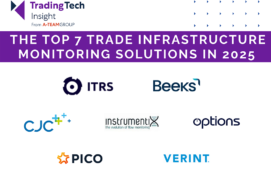When we first heard the latest theory on the succession plan for the former Reuters – that is to say, the market data vendor now known as Thomson Reuters Markets – we thought it was just so much tittle-tattle. It was back in October or November, and the integration of Reuters with Thomson Financial had barely been completed at best (and in fact is probably still ongoing). Surely the time wasn’t yet right for a change at the top, given how recently the key positions had been set post-merger in 2007.
Now we’re not so sure.
In a nutshell, here’s how the story went:
Eric Frank, who stepped in so ably to head Thomson Reuters Markets’ Research & Advisory buy-side business unit following the departure of Suresh Kavan almost immediately post-merger, we heard, was to be relocated from New York to Asia in a strategic move aimed at ‘spreading the wealth’ of senior management around the globe.
Devin Wenig, CEO of Thomson Reuters Markets, would be given a senior role at corporate Thomson Reuters, following mentor and Thomson Reuters’ overall CEO Tom Glocer into senior management of the umbrella holding group. Wenig’s move would pave the way for the elevation of Thomson Reuters Markets’ Enterprise group president Jon Robson to take over as CEO of Thomson Reuters Markets.
Crazy, right? And what about Mark Redwood, the former CEO of AVT who had headed Thomson Reuters Markets’ largest operating unit, Sales & Trading? Nowhere did Redwood feature in this scenario, which given the strategic importance of Sales & Trading, made no sense at all.
Hmm.
It now transpires that Eric Frank has been transferred to Hong Kong, where he will continue to run Research & Advisory. Redwood’s absence from our succession theorem may be explained, meanwhile, by the fact that he will step down and leave the company this coming summer.
Not so crazy after all.
Joining the dots, wouldn’t it make a whole lot more sense to meld the Sales & Trading and Enterprise groups, which currently fall over each other to sell product into primarily sell-side institutions. By merging S&T’s primarily terminal-based business with Enterprise’s data feeds and platforms business, Thomson Reuters Markets would be better positioned, surely, to stave off the threat of Bloomberg should it start to get its open platforms act together?
Maybe we shouldn’t have been quite so quick to dismiss this theory. Maybe what we’re hearing about is just a bit of jockeying for position as Redwood makes ready to depart. We don’t know.
But as the Meatloaf song goes: Two Out of Three Ain’t Bad.
Subscribe to our newsletter




